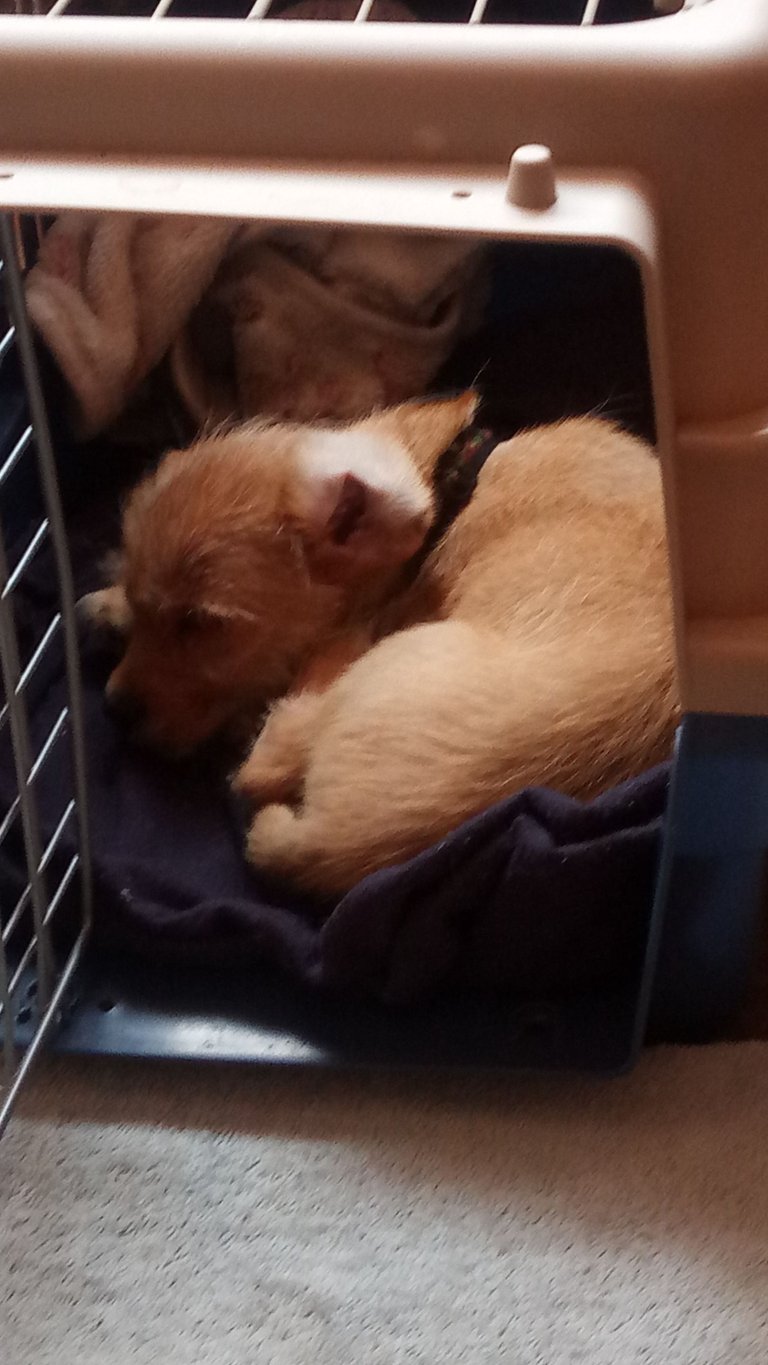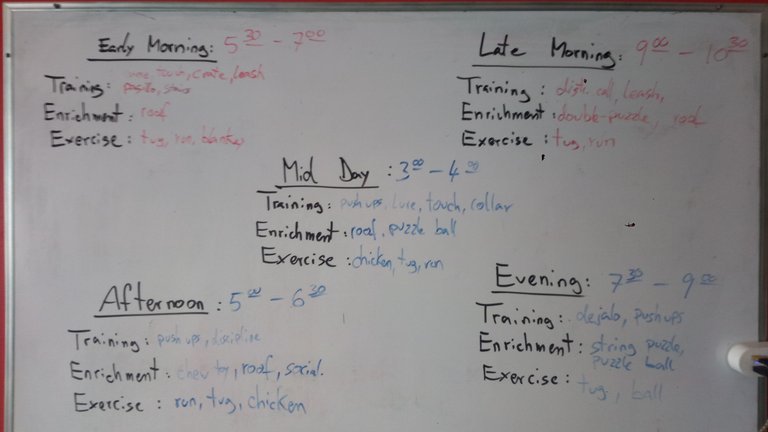One of the most essential things I have learned about raising a puppy is keeping a (preferably tight) schedule. The reason being, that just like babies, young dogs need a lot of sleep. However, they are usually not aware of this need, especially when there are so many distractions going on around them. But if they do not get their badly needed nap time, by the end of the day (or even by mid afternoon) they end up getting cranky, erratic, unable to focus, seemingly full of energy but in fact deeply exhausted. They may run through the house, chew on a chair leg, bark uncontrollably, and nip at you, all within the same minute. At that point you won't be able to pet them, let alone teach them anything.
Nap Time Means Crate Time
Good thing if there is a crate handy. Even better, if the dog has built up a positive relationship to it. As I explained in my last post about crate training, our little Bandido took an instant liking to his crate, which we feel super fortunate about. In fact, he is sleeping in it peacefully as I am typing this. To be honest, otherwise I don't think I would have the time to even cobble up a brief Thread. In fact, I don't think I will finish this post before nap time is over, and my attention will be demanded once again.

The Five Waking Windows
While there are a number of ways to break it down, the general rule of thumb is that puppies sleep about half the time -- of the day that is. In addition they should sleep all night, just as we do. Of course these naps are spread out through the day, giving us effectively five time windows when they are awake. These should be about one to two hours long, typically an hour and a half. During this time all their needs have to be met: peeing and pooing is one of them, which I want to address in a separate post. Then they want to eat and drink, have some physical activity as well as mental stimulation, plus they should hopefully learn something useful, and of course have some fun along the way. You may already have guessed, many of these things can be neatly combined.

Food and training go hand in hand (quite literally), so I like to make use of it as much as I can. If I give Bandi a bowl of food, it will disappear instantly, and then he'll be too full to be motivated by treats. However, if I spread out his kibbles in a number of fun games and activities, each time he does something desirable, I can reward him with a small piece of his lunch. When I realize that he's had enough of my training, I can still give him the rest of his food in a bowl (in his crate, to further reinforce him liking it.) Another option is to use various kinds of puzzles to hide his food in. Seeing him work for his food that way makes it obvious how much he's enjoying it.
Our Individual Schedule
Not only is each one of us different, but dogs are too. It is therefor a good idea to familiarize ourselves with our dog's preferences. Many will be most active around sunrise and sunset, but this may vary greatly. However, practicality will dictate that it's also our own schedule that we'll need to consider. In the end a nice compromise has to be made. After six weeks I think we may have reached that point.
Bandido just loves chilling out in the morning sun, dozing or sleeping, either in his crate or where the sun rays caress his fur. This works out beautifully, since most of my classes are during this time. Of course he still has his two waking windows, the first one from about 5:30 until 7:00, the second one anytime between 9:00 and noon, depending on the details of that day. While the early morning one tends to be quite active and productive, the second waking window is more relaxed for both of us.
Contrasted to this, our afternoons are full of life! Around 1:00 I try to include lots of mentally and physically tiring things, so he will have a nice nap before his 4 p.m. window. That one is often the most productive time, where his attention is the strongest, so this is when I try to get as much teaching in as I can.
Finally, he gets a "last nap of the day", typically around 7:00, when I need time to make and have dinner. This is often the hardest one, because Bandi is simply not up for resting at this time. After dinner he gets his last window to be active, which we take full advantage of. Playing ball, running around, tug-of-war, and other fast paced activities are the norm. After all, we want to make sure those batteries get completely drained. After this last ninety minutes when we put him to bed, we may even have some peace to watch an episode of a TV series.
How Long Should This Go On For?
If I had known the details of what having a puppy would mean for my daily schedule, I may not even have wanted to adopt a dog in the first place. This is even more true considering how long this daily routine should be maintained. The first six months are essential, but even during the second six month it will be super helpful to have a consistent routine. Dogs not only enjoy following it, but it helps setting up good habits, which he will follow throughout his life. And even once our little dog has grown into a mature and responsible adult where a crate is no longer necessary, there are certain routines that must be kept up. Most importantly I'm thinking about the morning and evening walks, which our last dog remembered (and reminded us if needed) with such precision that you could set your watch to. But this is exactly what having a dog is all about! If that doesn't sound appealing, maybe a cat would be a more appropriate pet.